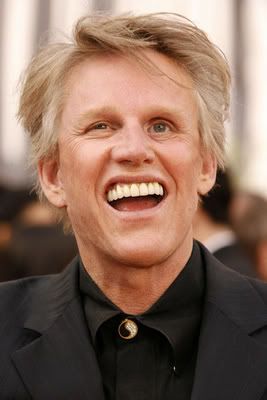RadioHowie
I Miss Beemerdons!
i sat on one the other day
to me it seems even taller than my FJR(insert funny short-legged person jokes here)
erm.....you're a funny short-legged person? Snerk!

i sat on one the other day
to me it seems even taller than my FJR(insert funny short-legged person jokes here)
that's better than what most people call mei sat on one the other day
to me it seems even taller than my FJR(insert funny short-legged person jokes here)
erm.....you're a funny short-legged person? Snerk!
Dunno if this discussion is still active, but there is a similar discussion over on Advrider so I'll chime in. While I'm sure a Versys would handle an occasional graded fire road just fine, if you're interested in any thing dual-sport oriented, then the small Strom would be a better choice. It mounts a 19" front wheel and you can find some decent 50-50 dual-sport rubber in this size (e.g., TKC80s). The 17" front end on the Versys is pretty much a strictly street or, at best, 90-10 tire size. Chunkier tires (and the extra diameter) will make a Strom do a lot better in the dirt.I wonder how the Versys would work as a DS, with different tires of course?
Huh? You're going to have to 'splain that one. If all other things were equal, (bore, stroke, fuel and ignition tuning) what on earth would make a V twin better at "hooking up" that a parallel twin? The uneven firing? And why do you think a single is better than a twin cylinder engine of the same displacement, other than weight, simplicity and cost?The Versys (may?) also have another somewhat disturbing mark against it for prospective dual-sport use -- the parallel-twin engine. This type of engine design often doesn't offer the kind of rear wheel traction that's appreciated off-road. When the going gets rough/loose/slippery, the parallel twin often spins the back tire too easily -- and higher-horsepower verticle twins (w/360 cranks) do that even easier. V-Twins hook-up better and singles are as good as it gets.
And I responded with something about the Versys' parallel-twin crank not being ideal. Given the general loose surfaces encountered in off-highway riding, sometimes traction (especially rear-tire grip) can be at a premium. That's where engine design makes a difference. Good traction comes from the 4-stroke single -- a power stroke starts every other revolution 0 -- 720/0 -- 720/0.... A 90 degree v-twin (not counting staggered crankpins) can be 0 -- 90 -- 720/0 -- 90 -- 720/0, kinda like a single with a longer firing pulse; or, 0 -- 450 -- 720/0 -- 450 -- 720/0, a 'staggered', un-even firing. An even-firing parallel twin (360 degree crank) is 0 -- 360 -- 720/0 -- 360 -- 720/0, too even and nice to help the rear tire find 'bite'.I wonder how the Versys would work as a DS, with different tires of course?
Okay, I'll give it a try. The question was:
And I responded with something about the Versys' parallel-twin crank not being ideal. Given the general loose surfaces encountered in off-highway riding, sometimes traction (especially rear-tire grip) can be at a premium. That's where engine design makes a difference. Good traction comes from the 4-stroke single -- a power stroke starts every other revolution 0 -- 720/0 -- 720/0.... A 90 degree v-twin (not counting staggered crankpins) can be 0 -- 90 -- 720/0 -- 90 -- 720/0, kinda like a single with a longer firing pulse; or, 0 -- 450 -- 720/0 -- 450 -- 720/0, a 'staggered', un-even firing. An even-firing parallel twin (360 degree crank) is 0 -- 360 -- 720/0 -- 360 -- 720/0, too even and nice to help the rear tire find 'bite'.I wonder how the Versys would work as a DS, with different tires of course?
Add to this: a high-performance engine -- once power starts to build, it's easier for the engine to spin the rear tire.
Alternately, bigger engines, whatever configuration, can seem to find traction easier at low rpm using well spaced power pulses.
This condition is actually easy to see on a damp rural un-paved road with something like a 650 single accellerating in top gear. You can actually go back and see the power-pulse 'divots' in the soft road surface. You could, if you wanted to, prove the theory mathematically (using timzez and gozintaz) knowing rpm, over-all gearing, and wheel diameter -- and know (then, measure) the distance between 'divots'. Sound like fun...? :blink:
And, 'markjenn' opined that the short-ish wheel-base of the Versys may work against it, too -- off-highway.
Hope this helps....


My graphic representation essentially says "first I got stoopid....then my head 'sploded!"I'm, not sure what Howie is saying, but I'm still not buying it.
That makes perfect sense.Of course I could be completely fooked and none of this makes a bit of sense.
That makes perfect sense.Of course I could be completely fooked and none of this makes a bit of sense.
Enter your email address to join: